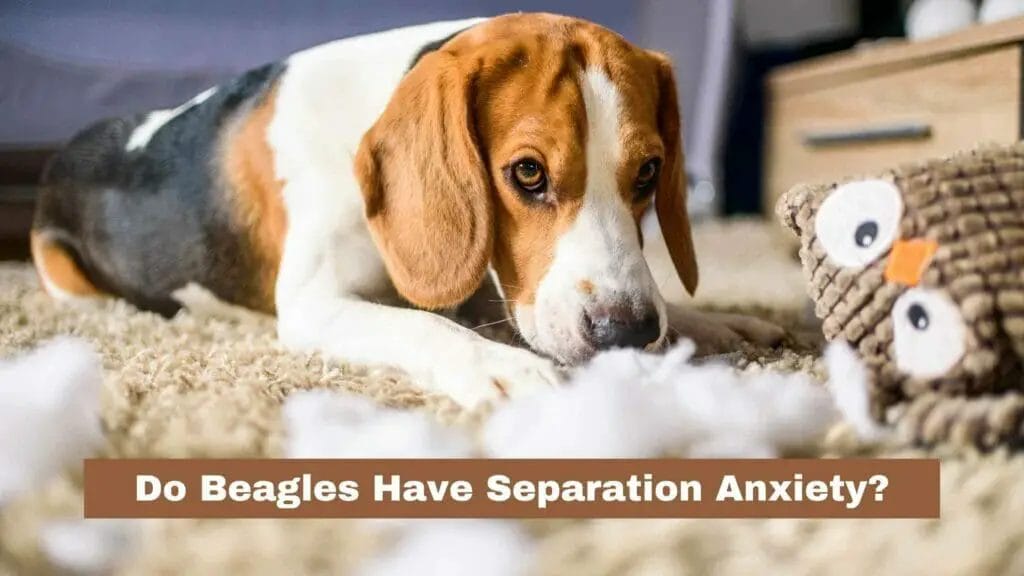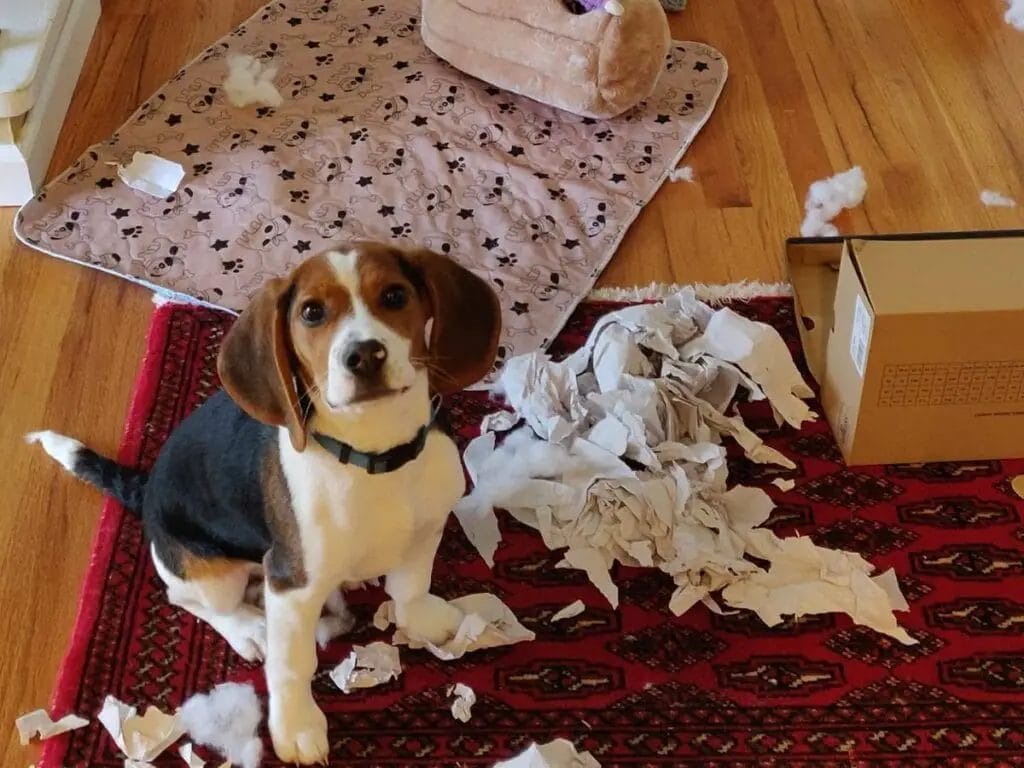
Over the years of working with a myriad of dog breeds, beagles have always stood out to me for their charming demeanor and insatiable curiosity. They’re energetic, playful, and undoubtedly social. But what happens when we leave these little bundles of joy alone for extended periods? Separation anxiety.
Yes, I’ve seen firsthand that beagles, like many other breeds, can exhibit signs of separation anxiety. Being left alone can be a daunting experience for these inherently sociable creatures.
What Separation Anxiety Looks Like in Beagles
From my experience, when a beagle experiences separation anxiety, they’ll show it. Some of the signs I’ve noticed include:
- Excessive barking or whining – This is their way of calling out for company or expressing their distress.
- Destructive behavior – From chewing furniture to digging holes in the backyard, an anxious beagle can be a handful!
- Pacing or restlessness – Just like humans, an anxious dog will have difficulty staying still.
- Attempts to escape – I remember a beagle named Max who tried to squeeze through a half-open window just to get to his family.
Fun Fact: Beagles were originally pack hunters, which means they're genetically wired to be around company. This pack mentality is partly why they crave social interactions. Learn more about their behavior in our article on Beagle Behavior by Age.

The Root Cause
Now, understanding why beagles experience separation anxiety is crucial for addressing it. Their pack-hunting ancestry plays a role, but other factors contribute as well:
- Changes in their environment or routine.
- Introduction of new family members or pets.
In one memorable instance, I worked with a beagle named Lucy. She began exhibiting signs of anxiety after her family moved houses. The unfamiliar surroundings and the absence of her family during the day were overwhelming for her.
My Pro Tips for Helping Your Beagle
Addressing separation anxiety requires patience and understanding. Here are some tried-and-tested methods I’ve used:
- Establish a Safe Space: Ensure your beagle has a comfortable area where they can retreat. For some, it’s a cozy corner with their favorite toys, while for others, it might be a crate they associate with safety.
- Routine is Key: Beagles thrive on consistency. Maintaining a regular feeding and playtime routine can be reassuring for them.
- Mental and Physical Stimulation: A tired beagle is a happy beagle. Regular walks and engaging toys can help channel their energy and reduce anxiety.
- Calming Aids: I’ve found certain calming sprays and anxiety wraps to be effective in soothing anxious beagles.
- Seek Professional Help: If your beagle’s anxiety doesn’t improve, consult with a vet. They might suggest behavioral therapies or even medications.
Prevention Over Cure
While addressing separation anxiety is crucial, preventing it is even more effective:
- Early Socialization: Introduce your beagle to various experiences when they’re young. This helps them adapt better to changes as they grow.
- Limit Alone Time: If possible, try not to leave your beagle alone for extended periods. If you have to, consider getting a doggy companion or hiring a dog walker.
- Keep Them Engaged: From puzzle toys to hide-and-seek games, ensure your beagle’s mind and body are always active.
For a deeper understanding on the importance of prevention, read this comprehensive guide on preventing separation anxiety. Additionally, to grasp the broader issue and its impact on various pets, learn more about separation anxiety in pets.
In wrapping this up, remember that every beagle is unique. What works for one might not work for another. But with patience, love, and a little expertise, you can ensure your beagle lives a joyful, anxiety-free life. After all, a happy beagle is what every dog trainer, including me, strives for!
